FULL SUN
Spring & Fall
pH
Acidic
PLANTING
September & February
FEEDING
Balanced organic fertilizer
EXPERIENCE
Easy
Growing Potatoes in the Desert
Homegrown potatoes are a marvel! Fortunately, our warmer climate affords us the luxury of growing potatoes in both Spring and Fall. Spring planted potatoes are sown in February and harvested as early as May. Fall planted potatoes are sown in late September and harvested in December or January.
How To Grow Potatoes in the desert
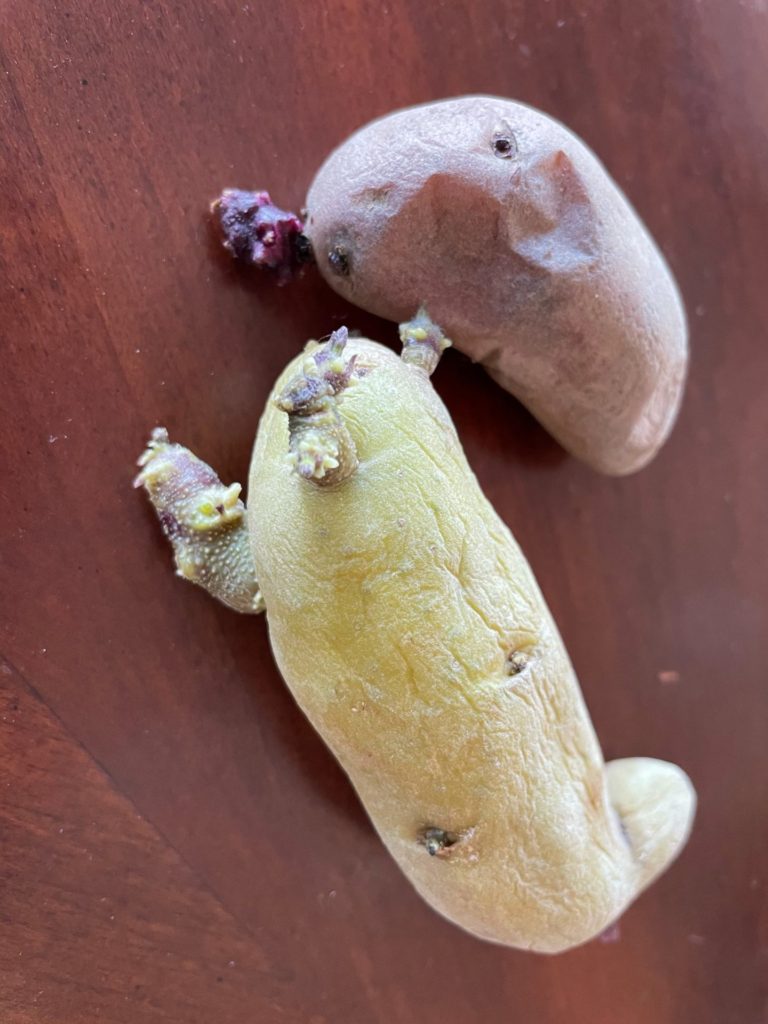
- Begin by chitting the potatoes. This is the process of eye development. Set the potatoes in an empty egg carton in a warm place. After a few days, the potatoes will start to form little nodules called eyes. Potatoes should be chitted 3-4 weeks before planting.
- Once chitted, a single potato can be divided into several pieces, before planting. Cut the potato into 4 quarters, then leave in the egg carton to dry out for a further 2-3 days. This seals the cut part of the potato, preventing harmful bacterias from entering the potato, preventing rot and reducing possible pests from feeding on the seed potatoes.
- Potatoes can be grown in-ground, in raised beds or containers. Many gardeners prefer growing them in containers as it is easier to harvest. Any large container can be used such as fabric grow bags, wooded containers, old metal trash cans(make drainage holes), and in a pinch eleven 5 gallon buckets.
- Start by preparing the soil. Potatoes love rich soil, add a generous amount of good organic compost, and ensure that the soil is light and fluffy. In containers, add some native clay to help with moisture retention and added minerals. In-ground add some builders sand to increase drainage. Add Earth’s Original Organics, Magix Mix, to the soil.
- Potatoes prefer a slightly acid soil. Add additional humic acids or small amounts of citric acid before planting and throughout the growing season to maintain a slightly acid pH.
- You can choose to leave all the eyes on each piece of potato or remove all except the strongest. More eyes will result in more potatoes but smaller size of potatoes. Fewer eyes will result in larger potatoes but fewer potatoes.
- Plant each piece of potato with the eyes facing upwards and covers with 4-5 inches of soil. The eyes will develop into a stem, underground it will potatoes, and above ground, lush green foliage.
- Plant about 9 inches apart.
- Keep potatoes well-watered, do not allow them to dry out completely. However, do not overwater, wait until the soil is almost dry before watering again. This applies particularly to fall-planted potatoes in November and December. Spring planted potatoes will likely need to be watered every day once in raised beds and containers temperatures start to heat up.
- Once plants are about 2 feet tall, cover the soil with 3 inches of mulch.
- Fall sown potatoes should be protected with frost cloth if frosts are expected
***For information on Earthing Up, see varieties.
Potato varieties
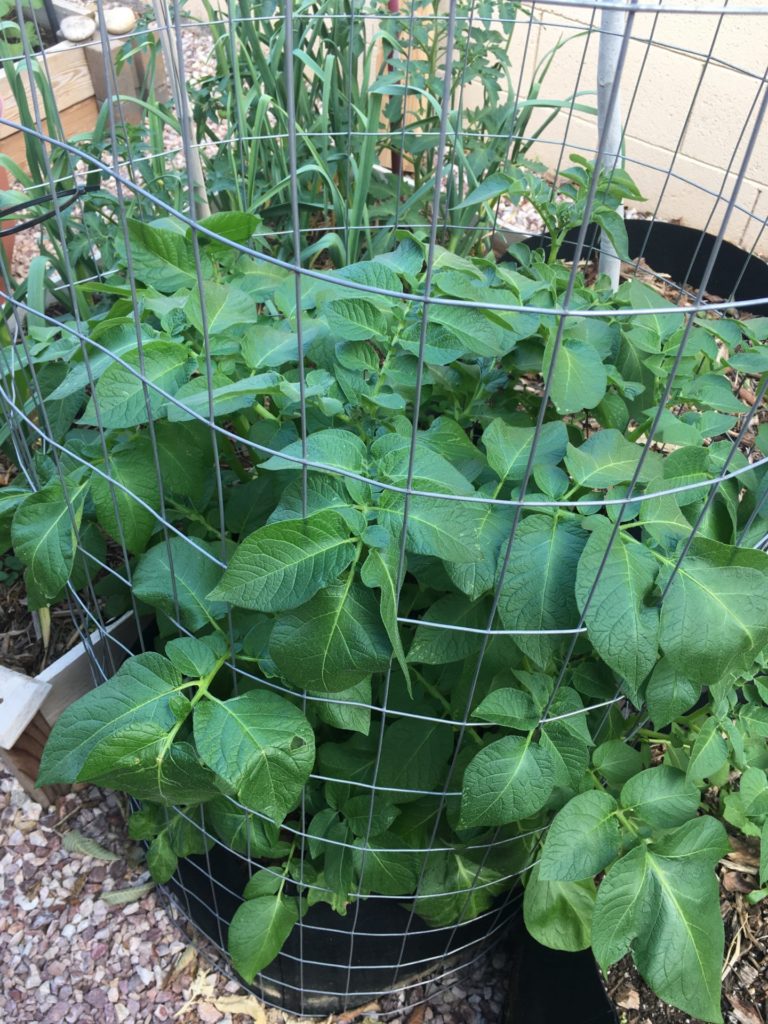
Just like its tomato cousin, potatoes are determinate and indeterminate.
Determinate potatoes have more of a lateral spreading potato development, hilling up or covering the stems is not going to help increase potato yields. Indeterminate varieties however are better grown in towers or some kind of system where there can be a lot of vertical growth. Examples of determinate varieties are Yukon Gold, Ida Rose, Red Pontiac, the Norland varieties, most fingerlings, and Kennebec. Determinate varieties will be early or mid-season types. Early potatoes mature in 75-90 days, such as Irish Cobbler and Norlands. Mid-season potatoes mature in 90-110 days. Mid and early season potatoes are best for growing in the desert.
Indeterminate varieties grow in multiple layers, so mounding soil up is required for a good harvest. Indeterminate varieties produce better yields and require about 110 to 135 days of growing time. They do well in-ground or in deeper containers such as a potato tower or deep old trash can.
Indeterminate varieties are also referred to as late-season potatoes. Examples are Snowden, Russets, German Butterball, and Desiree. These are also referred to as maincrop potatoes.
To grow potatoes in fall, check out Groworganic.com. They carry potato seed stock for fall planting. Alternatively, buy organic potatoes from the store and plant them. It helps to know the variety so that they can bee planted correctly.
FERTILIZING AND FEEDING POTATOES
Initially use a balanced organic fertilizer or Earth’s Original Organics Magic Mix. During the growing season feed with an organic fertilizer higher in potassium and prosperous. Switch to Earth’s Original Organics Magic Bloom. Liquid seaweed and fish emulsion every two weeks is a good option. Add in humic acids or small amounts of citric acid throughout the growing season to maintain an acid soil.
POSSIBLE ISSUES
Colorado Potato Beetle: The Colorado potato beetle can wreak havoc on crops in the Solanaceae family. The best defense is the use of beneficial nematodes to get rid of the larval stage pest in the soil. Manually pick of adults and drop into soapy water and destroy any bright orange eggs found.
Scab: Potato scab causes ugly lesions on the tubers. This disease does not affect yields but does affect appearance and commercially it affects the marketability of the potatoes. It is caused by a soil-born bacteria. Scab resistant varieties such as Russet Burbank, Nordland, Viking, and Gold Rush can be planted. Acid soil conditions will also help deter this disease.
Blight: Blight, both early and late is a fungal infection and will slowly kill the potato plants affecting yields. It causes decay in foliage and will also affect tomatoes.it starts out as small dark brown circles on the lower and older leaves. Treat with an organic foliar fungicide and alternate with foliar sprays of compost tea. Do not treat during high sun hours, treat in the evening. To avoid blight issues do not water potatoes in the evening and ensure that there is a good amount of airflow around the plants. Depending on the severity of the infection, it will affect the tubers rendering them inedible. Due to diseases such as blight and scab, potato seed stock is recommended for planting rather than store-bought potatoes. Seed stock is certified free of carrying blight, while there are no guarantees with seed bough potatoes.
COMPANIONS
Flax is an excellent companion for potatoes and will protect against the Colorado potato Beetle. Other companion plants are marigolds(fall and spring), nasturtiums(spring), beans(fall and spring).
Do not plant close to tomatoes and other Solanaceae family plants, as diseases could be passed between them.
HARVESTING
Potatoes are harvested after they flower or when they start to die back. Harvest potatoes once the foliage dies back. Allow to stay in the ground about 5 days after the foliage has died, then harvest. During this time, stop watering. This helps for easier harvesting. If harvesting from a raised bed or inground, gently use a garden fork to unearth the potatoes. If grown in a container, the container can be toppled over to harvest. Immediately remove from the sun and store in a cool dark place to allow the skins to cure. However, freshly harvest potatoes can also be cooked immediately
PROPAGATION AND SEED SAVING
Seeds are not exactly saved for potatoes. The flowers do make a seed in some cases and these can be planted, however, potatoes are generally planted from quality stock planting potatoes called seed stock.
Sweet potatoes are not related to regular potatoes and growing them is different. They are a warm-season crop preferring a long hot growing season. There will be a future post on sweet potatoes.

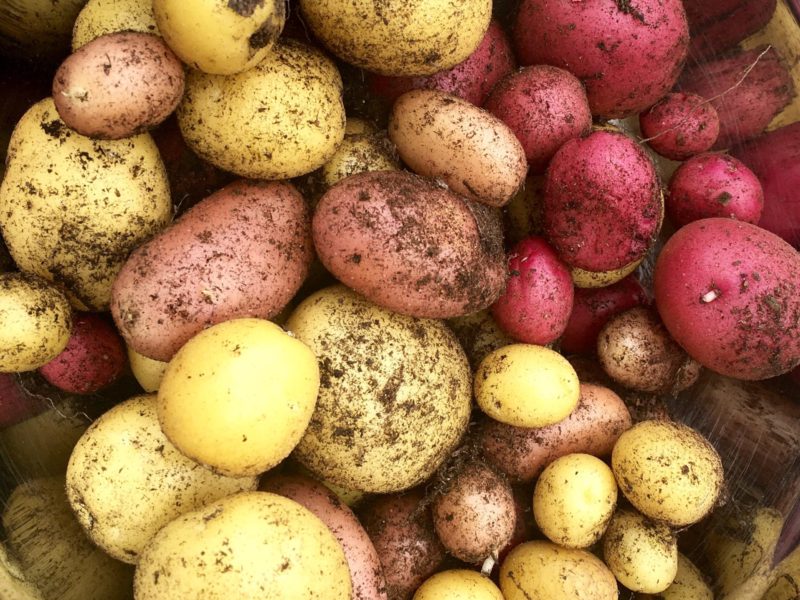
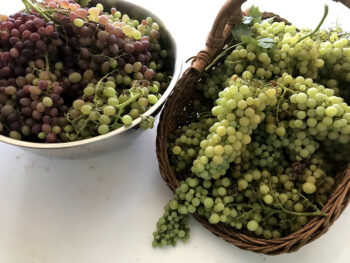

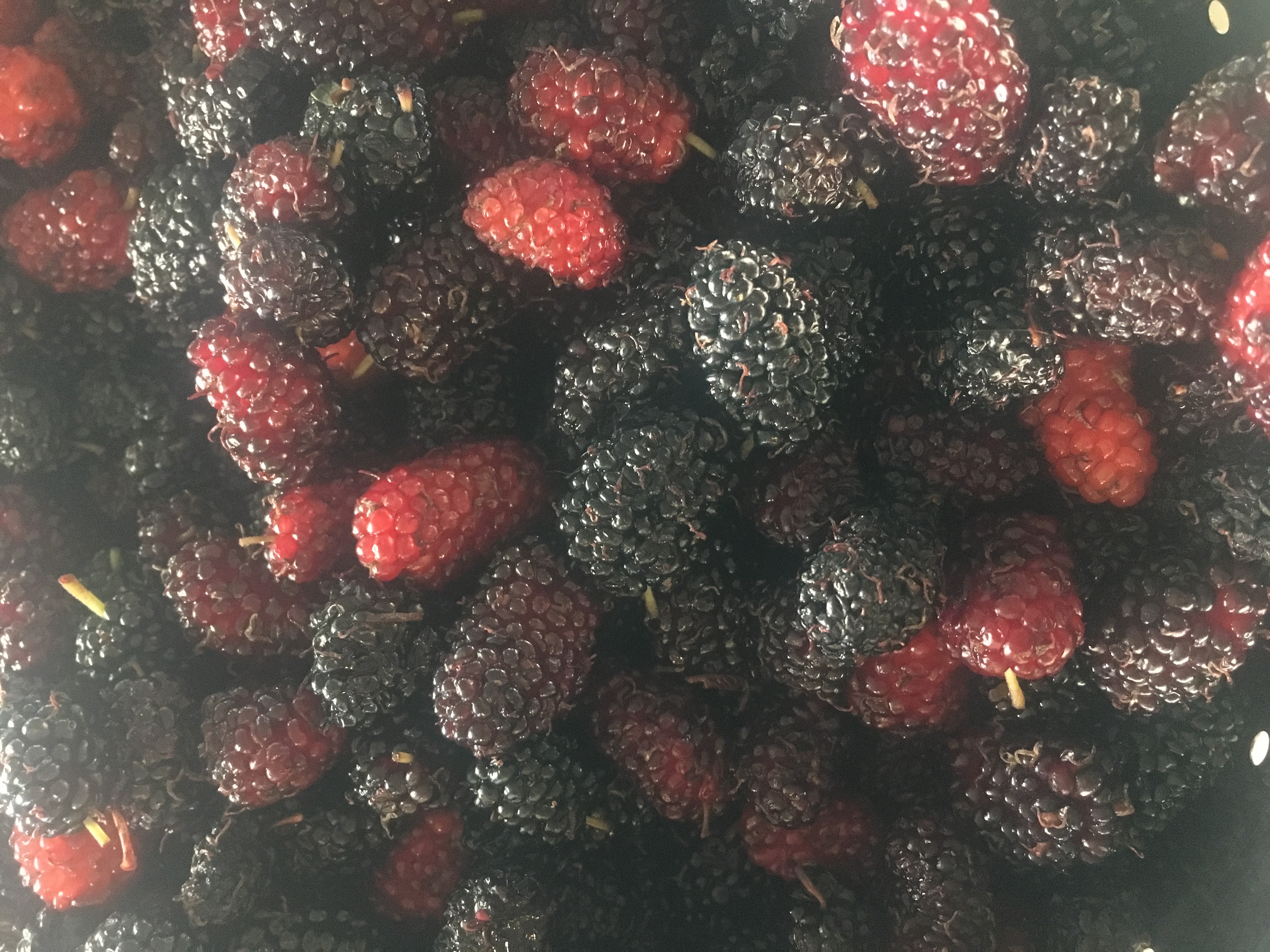
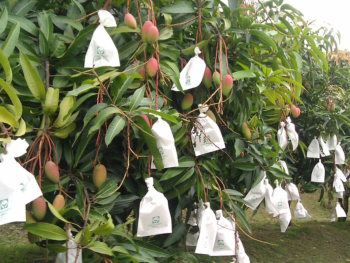
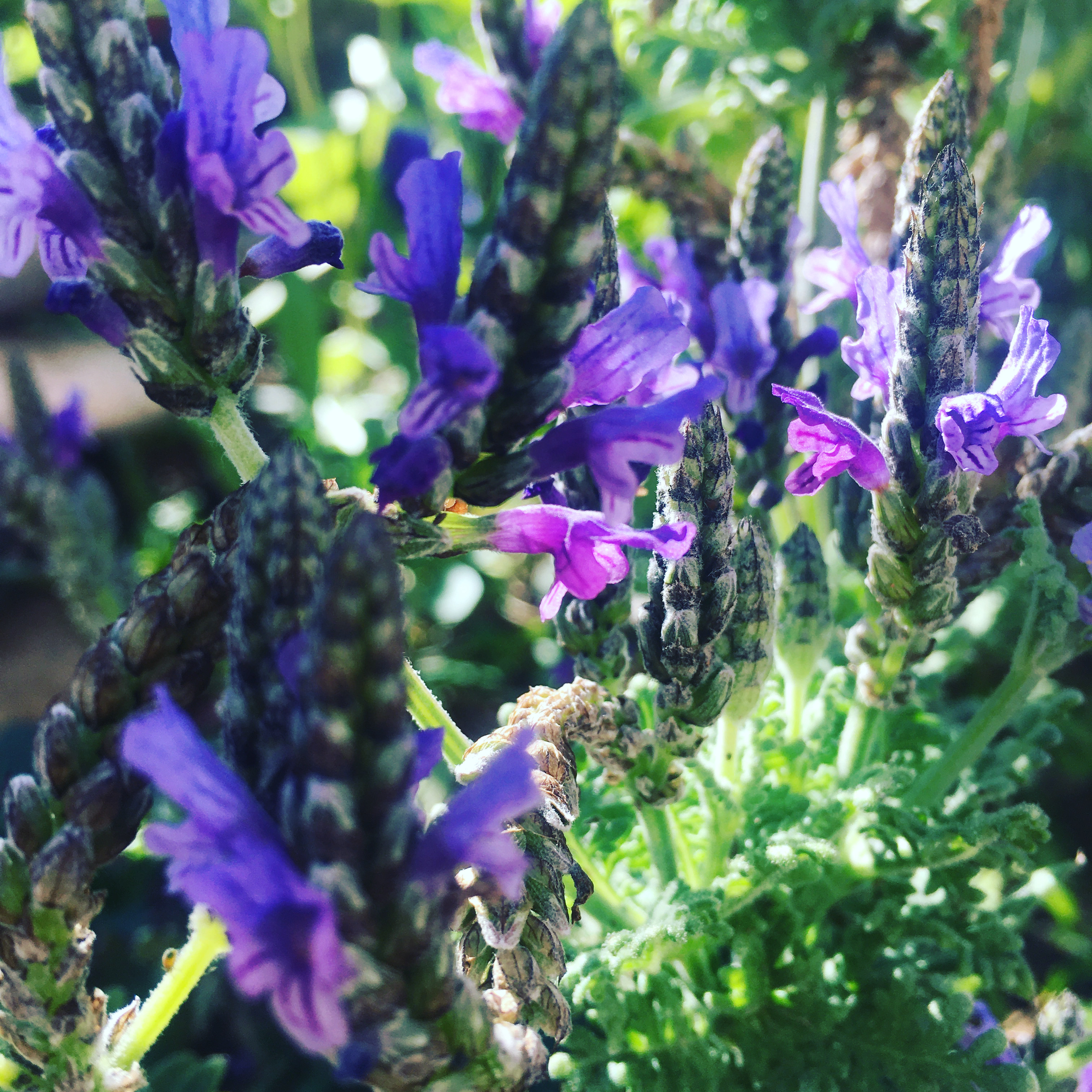
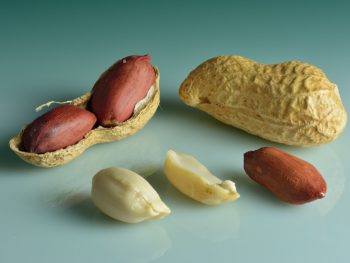
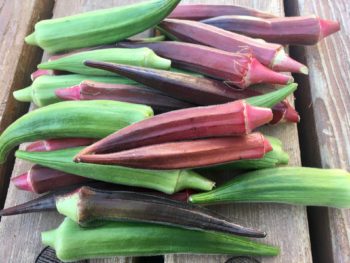
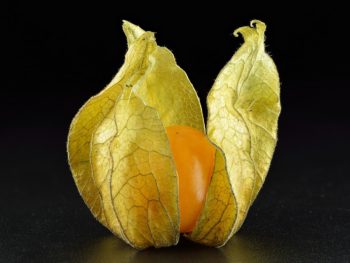
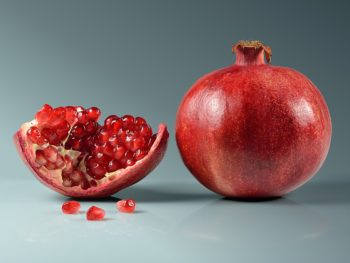
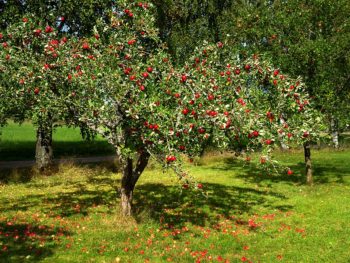
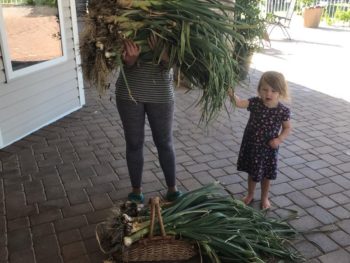
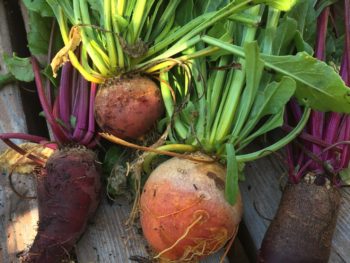
 A Guide to Growing Roses in the Desert
A Guide to Growing Roses in the Desert
This is an excellent article. Thank you very much!